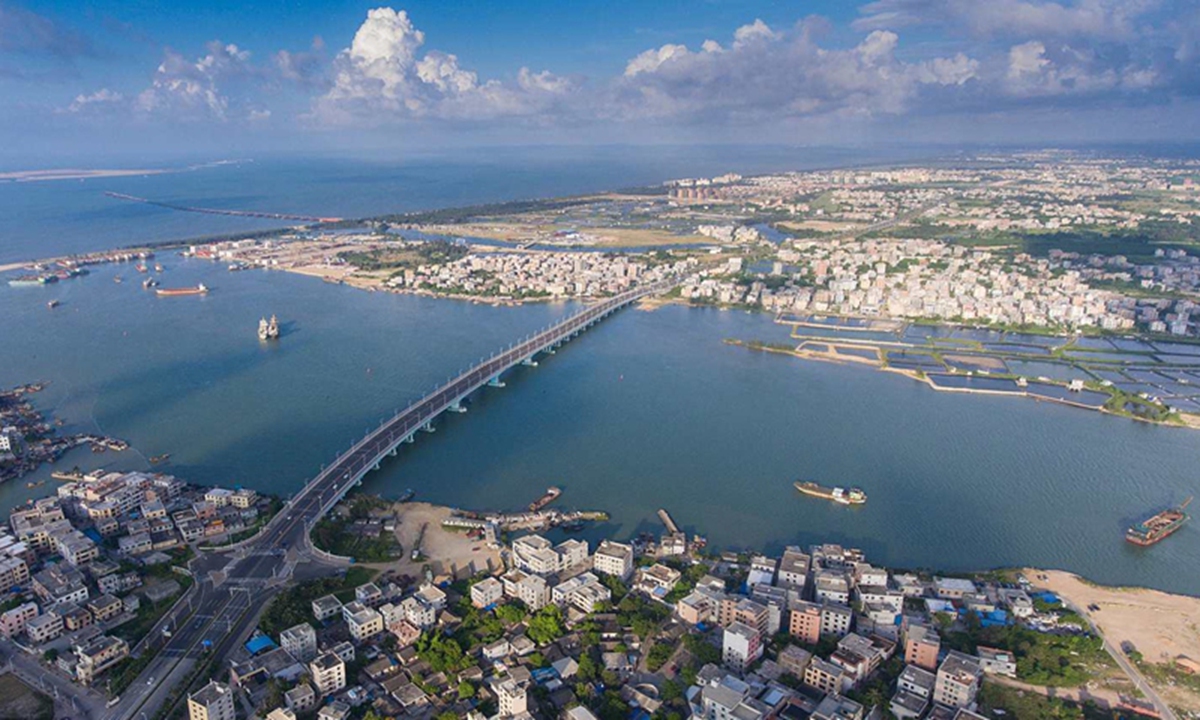Which countries will benefit the most from China's Hainan master plan?
By Qian Feng Source:Global Times Published: 2020/6/9 0:01:53

Photo: CGTN
China's milestone announcement of its master plan to build the southern island province of Hainan into a world-class free trade port is a key link in its efforts toward a new pattern of comprehensive opening-up. The strategic plan for the next decades aims to build high-standard open trade mechanisms rather than only promote trade and investment facilitation. It's bound to create golden opportunities for ASEAN and Belt and Road Initiative (BRI) countries to boost their economic growth despite rising protectionism and uncertainty.The Hainan Free Trade Port construction plan clearly states that Hainan should strengthen exchanges and cooperation with ASEAN, China's largest trade partner. During the construction process, Hainan will further enhance trade, investment facilitation, trade exchanges and talent flows, and will become a new business and financial hub.
Hainan, also a vital point on the maritime Silk Road, will play a more significant role in BRI cooperation and will expand the space for business and trade cooperation. The plan will deepen China's cooperation with the countries along the Belt and Road in the field of marine affairs, promote regional marine economic integration, create good opportunities and tap new economic growth points amid gloomy global prospects.
The Hainan plan demonstrates China's resolve to promote a comprehensive opening-up against anti-globalization headwinds. The long-term strategy will strengthen mutual trust among China and ASEAN members. The plan is expected to help China and ASEAN resolve their misunderstandings and promote cooperation in the South China Sea with the marine economy as the main point of focus.
China and ASEAN should not worry that South China Sea issues will stand in the way of promoting cooperation. In recent years, although there has been external interference from a few non-regional countries, the situation in the South China Sea has stabilized due to joint efforts from China and ASEAN members. Significant progress has been made in cooperation on maritime search and rescue efforts as well as marine conservation and research. Certain countries may have disputes over oil and gas resources, but the Hainan plan is set to upgrade cooperation in finance, business, trade and industrial chains.
China is facing pressure from the US' unilateral moves to push the two largest economies to the brink of a new Cold War amid the COVID-19 crisis. Yet China's opening-up efforts - including the Hainan plan - are not intended to draw ASEAN against the US. However, as positive changes in the region unfold, China will gain more strength to oppose the US' reckless crackdown.
From the Obama administration's Asia-Pacific Rebalance strategy to the Trump administration's Indo-Pacific strategy, the US has been trying to gain more strategic advantages by drawing ASEAN members against China. But the Trump administration's policies of "America first" and drawing out international organizations have distanced ASEAN members already. In addition, as COVID-19 rages in the US, the country lacks the resources and willingness to enhance business and trade cooperation, and to promote industrial chain integration with ASEAN.
As Hainan develops into a new regional finance and trade hub, the advantages of BRI and Regional Comprehensive Economic Partnership (RCEP) cooperation will be further amplified. The positive cooperation under these multilateral mechanisms will attract more attention from outsiders like India.
The author is director of the research department at the National Strategy Institute at Tsinghua University in Beijing. bizopinion@globaltimes.com.cn
Posted in: EXPERT ASSESSMENT